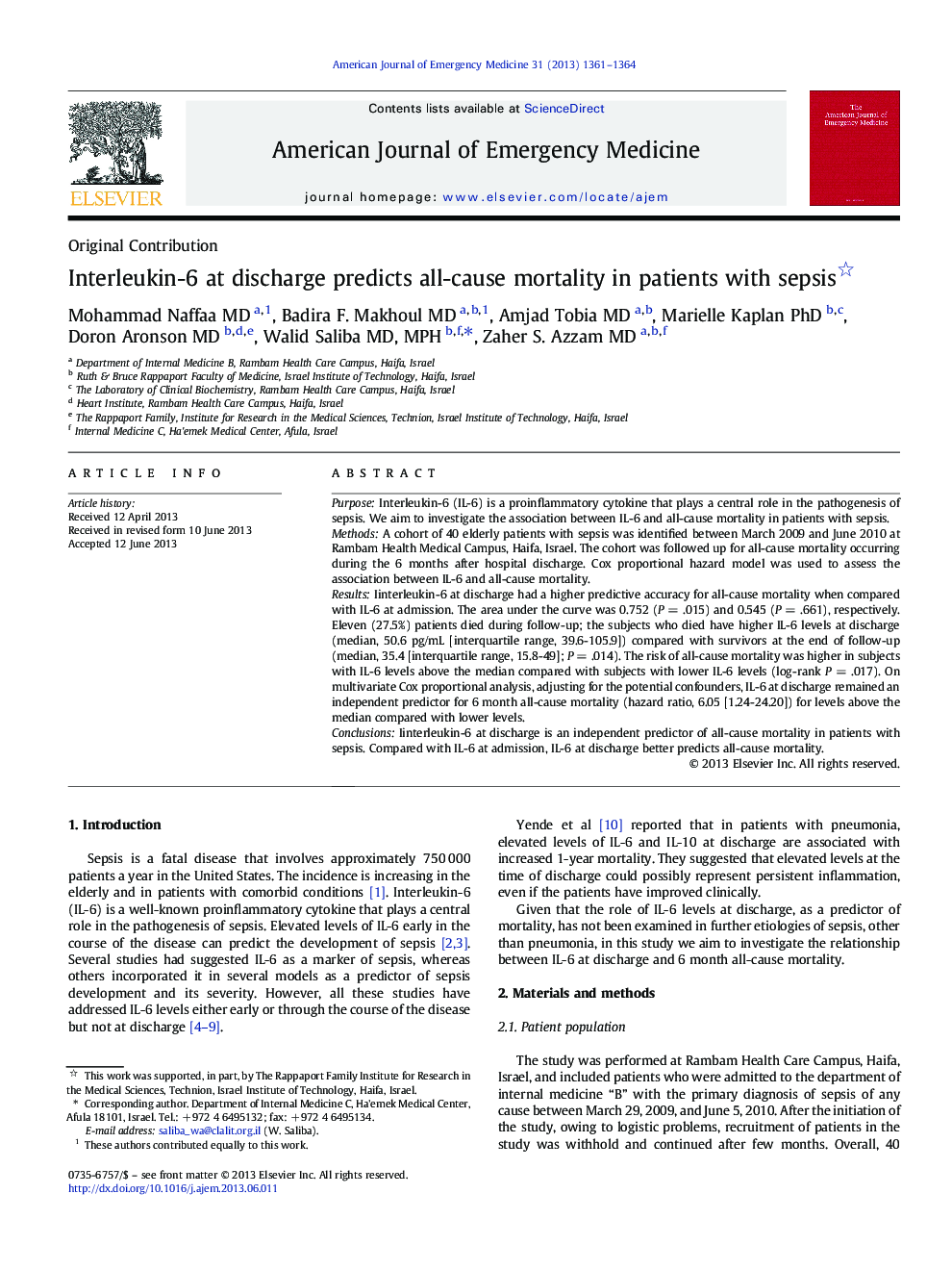| کد مقاله | کد نشریه | سال انتشار | مقاله انگلیسی | نسخه تمام متن |
|---|---|---|---|---|
| 3224498 | 1588126 | 2013 | 4 صفحه PDF | دانلود رایگان |

PurposeInterleukin-6 (IL-6) is a proinflammatory cytokine that plays a central role in the pathogenesis of sepsis. We aim to investigate the association between IL-6 and all-cause mortality in patients with sepsis.MethodsA cohort of 40 elderly patients with sepsis was identified between March 2009 and June 2010 at Rambam Health Medical Campus, Haifa, Israel. The cohort was followed up for all-cause mortality occurring during the 6 months after hospital discharge. Cox proportional hazard model was used to assess the association between IL-6 and all-cause mortality.ResultsIinterleukin-6 at discharge had a higher predictive accuracy for all-cause mortality when compared with IL-6 at admission. The area under the curve was 0.752 (P = .015) and 0.545 (P = .661), respectively. Eleven (27.5%) patients died during follow-up; the subjects who died have higher IL-6 levels at discharge (median, 50.6 pg/mL [interquartile range, 39.6-105.9]) compared with survivors at the end of follow-up (median, 35.4 [interquartile range, 15.8-49]; P = .014). The risk of all-cause mortality was higher in subjects with IL-6 levels above the median compared with subjects with lower IL-6 levels (log-rank P = .017). On multivariate Cox proportional analysis, adjusting for the potential confounders, IL-6 at discharge remained an independent predictor for 6 month all-cause mortality (hazard ratio, 6.05 [1.24-24.20]) for levels above the median compared with lower levels.ConclusionsIinterleukin-6 at discharge is an independent predictor of all-cause mortality in patients with sepsis. Compared with IL-6 at admission, IL-6 at discharge better predicts all-cause mortality.
Journal: The American Journal of Emergency Medicine - Volume 31, Issue 9, September 2013, Pages 1361–1364